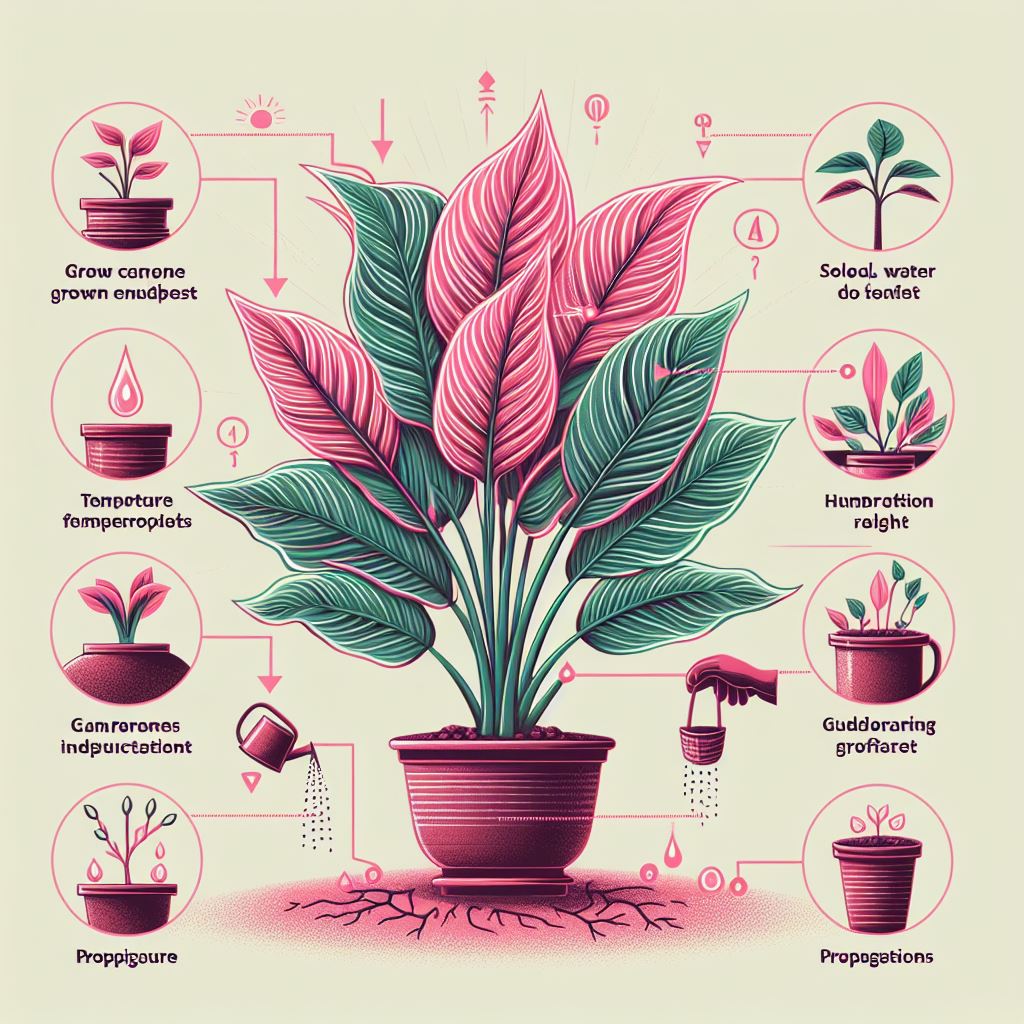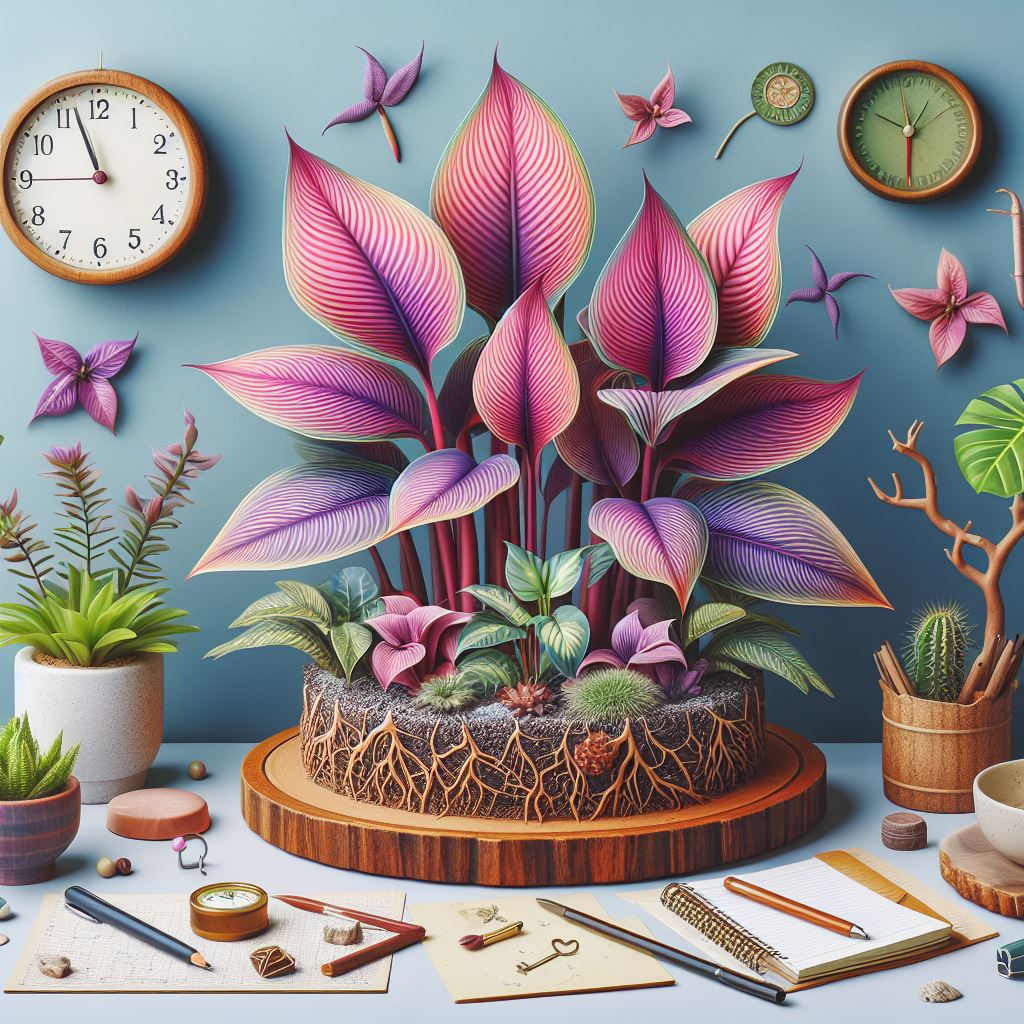Calathea Roseopicta, also known as the Rose-painted Calathea, is a stunning and popular choice for indoor plant enthusiasts. Whether you’re a beginner or a seasoned plant parent, cultivating Calathea Roseopicta might seem challenging at first.
However, with the right tips and ideas, you can successfully nurture this beautiful plant and create an eye-catching indoor oasis. From choosing the perfect pot and soil to mastering watering techniques and dealing with common pests, this guide will provide you with all the essential information to care for your Calathea Roseopicta and keep it thriving. So, let’s dive into the world of Calathea Roseopicta and unlock the secrets to successful cultivation.
Tips for Choosing the Right Pot and Soil
When it comes to cultivating Calathea Roseopicta, selecting the right pot and soil is crucial for its overall health and growth. Here are some practical tips to consider:

Pot Selection:
- Choose a pot with drainage holes to prevent waterlogging, as excessive moisture can lead to root rot.
- Opt for a slightly larger pot than the current one, allowing room for the plant to grow without being too constricted.
Soil Choice:
- Select a well-draining, high-quality potting mix that retains moisture without becoming waterlogged.
- Consider using a mix that includes peat, perlite, and pine bark to ensure adequate aeration and moisture retention.
- Avoid dense or compacted soils, as they can hinder root development and lead to waterlogging issues.
Comparing Soil Types:
| Soil Type | Features |
|---|---|
| Peat-based soil | Retains moisture well, provides good aeration |
| Perlite-rich soil | Enhances drainage and aeration |
| Pine bark-infused soil | Aids in moisture retention and aeration |
Selecting the right pot and soil is the foundation for successful cultivation of Calathea Roseopicta, providing a conducive environment for healthy growth and vibrant foliage.
How to Plant, Grow, and Care for Calathea Roseopicta Indoors
Calathea Roseopicta, also known as the Rose-Painted Calathea, is a stunning indoor plant that requires specific care to thrive. Follow these guidelines to ensure the optimal growth and health of your Calathea Roseopicta:

Potting and Soil: When planting Calathea Roseopicta, use a well-draining potting mix to prevent waterlogging, which can lead to root rot. A mix containing perlite or sand is ideal to enhance drainage.
Planting and Growth: Plant the Calathea Roseopicta in a pot with adequate drainage holes to facilitate proper water drainage. Ensure the plant is placed at the same depth as it was in the previous container.
Watering: Keep the soil consistently moist but not waterlogged. Use room temperature, filtered water to avoid chemicals present in tap water. Water when the top inch of soil feels dry, typically once a week.
Humidity and Temperature: Maintain high humidity levels around the plant by misting regularly or using a pebble tray. Calathea Roseopicta thrives in temperatures of 65-75°F, and it’s important to keep it away from cold drafts or direct heat sources.
Feeding: During the growing season in spring and summer, feed the plant every 4-6 weeks with a balanced, water-soluble fertilizer diluted to half strength.
Pruning: Remove any yellowing or damaged leaves with sharp, sterile scissors to encourage new growth and maintain the plant’s appearance.
By providing the right growing conditions and attentive care, you can enjoy the beauty of Calathea Roseopicta in your indoor space.
Unveiling the Enchantment
Calathea roseopicta, a resident of the Brazilian rainforest’s verdant embrace, emerges as a distinguished member of the prayer plant family. Its expansive tropical foliage, adorned with an intricate feathery pattern in shades of pink and fuchsia, imparts an impression of handcrafted artistry upon dark green canvases. The passage of time bestows a subtle transformation, as the vibrant stripes gracefully yield to a softer, more subdued palette.

As night descends, the calathea roseopicta unveils its secret: an underside painted in a captivating purplish-red hue, visible when the leaves gracefully fold. Growing from a rhizome with a penchant for forming clusters, this evergreen companion promises a perennial showcase of its breathtaking hues.
Within the realm of plant hybrids, each variant exhibits unique colors, leaf shapes, and patterns. Yet, they all share a common thread – the enchanting, feathery border pattern. Celebrated for both its aesthetic allure and the dynamic interplay of colors, the plant stands as an entrancing presence within indoor landscapes.
Ideal Lighting Conditions for Calathea Roseopicta
Calathea Roseopicta, also known as the rose-painted calathea, thrives in bright, indirect light. Follow these guidelines to provide the ideal lighting conditions for your Calathea Roseopicta:

Indirect Sunlight: Place your plant in a location with bright, indirect sunlight. Direct sunlight can scorch the leaves, so it’s crucial to protect the plant from the harsh rays of the sun.
Filtered Light: If direct sunlight is unavoidable, use sheer curtains or blinds to filter the light. This will help to diminish the intensity of the sun’s rays and prevent damage to the delicate foliage.
North or East-Facing Windows: Opt for a spot near a north or east-facing window, as these locations usually provide the perfect balance of light for your Roseopicta without subjecting it to direct sun exposure.
Avoid Dark Corners: While Calathea prefers ample light, it’s important to keep it away from dark corners or areas with low light levels. Inadequate light can cause the plant’s colors to fade and may lead to stunted growth.
By ensuring that your plant receives the right amount of light, you can contribute to its overall health and vibrancy.
Remember, every plant has unique care requirements, and understanding these needs is essential for cultivating healthy and thriving greenery, including your stunning Calathea Roseopicta.
Comprehensive Details for Calathea Roseopicta Care and Characteristics:
| Aspect | Details |
|---|---|
| Sun Exposure | Bright indirect sunlight |
| Soil Type | Well-draining, peat-based potting mix |
| Soil pH | Acidic, Neutral, Slightly Alkaline |
| Watering Needs | Keep soil consistently moist; water when top inch is dry |
| Temperature Range | 65-75°F (18-24°C) |
| Humidity Preferences | High humidity preferred |
| Height | 20 to 50 inches tall |
| Spread | 18 to 24 inches |
| Growth Rate | Moderate |
| Bloom Time | Anytime, but flowers are small |
| Flower Colors | Pink, purple, dark green |
| Foliage Color | Variegated shades of green and pink |
| Pruning Needs | Trim yellow or damaged leaves; remove debris regularly |
| Propagation Methods | Division, stem cuttings |
| Native Area | Brazil |
| Botanical Name | Calathea Roseopicta |
| Common Name | Rose Painted Calathea |
| Family | Marantaceae |
| Plant Type | Foliage, vine, large type |
| Hardiness Zones | 11-12 USDA |
| Special Features | Air-purifying qualities; leaves fold up at night (nyctinasty) |
Appropriate Temperature and Humidity Levels
Calathea Roseopicta is a tropical plant and requires specific temperature and humidity levels to thrive. Maintaining a suitable environment for your plant is crucial for its overall health and vibrancy.

Temperature
Calathea Roseopicta prefers consistent temperatures ranging between 65°F and 80°F (18°C to 27°C) throughout the year. However, it’s essential to protect the plant from any sudden temperature drops, as it can be sensitive to cold drafts. Here are some tips for maintaining the ideal temperature:
- Avoid exposing the plant to direct cold air from air conditioning units or drafty windows.
- During the colder months, ensure that the plant is not placed near cold windows or doors.
Humidity
This species thrives in high humidity environments, ideally between 60% to 70%. To maintain appropriate humidity levels, you can:
- Use a humidifier to increase the moisture in the air, especially during drier seasons.
- Grouping plants together can create a microclimate that increases humidity around the plants.
- Alternatively, misting the Calathea Roseopicta regularly can provide a moisture boost, but make sure not to overdo it and cause waterlogged soil.
Temperature and Humidity Comparison Table
To make it easier to understand the ideal temperature and humidity conditions, here’s a simple comparison table:
| Aspect | Ideal Conditions |
|---|---|
| Temperature | 65°F to 80°F (18°C to 27°C) |
| Humidity | 60% to 70% |
Ensuring that your home provides the correct temperature and humidity levels is essential for the well-being of your Calathea Roseopicta. By paying attention to these factors, you can create a thriving environment for this beautiful plant.

Remember, Calathea Roseopicta’s sensitivity to temperature and humidity emphasizes the need for a consistent and nurturing environment.
Watering Techniques and Frequency
Calathea Roseopicta requires a specific watering routine to thrive and maintain its stunning appearance. Improper watering can lead to issues such as leaf curling or browning, so it’s crucial to get it right. Here are some effective watering techniques and frequency guidelines to keep your plant healthy:

- Use Filtered Water: Calathea Roseopicta is sensitive to chemicals commonly found in tap water, so it’s best to use filtered water at room temperature. This helps prevent the accumulation of salts and chemicals in the soil.
- Keep the Soil Moist: Aim to keep the soil consistently moist, but not waterlogged. It’s important to maintain a good balance, as overly dry soil can cause the leaves to crisp, while overly wet soil can lead to root rot.
- Watering Frequency: During the growing season in spring and summer, water your Calathea about once a week. In the dormant season, which is fall and winter, reduce the frequency to every 10-14 days.
- Test the Soil: Before watering, check the soil moisture level by inserting your finger about an inch into the soil. If it feels dry, it’s time to water. If it’s still moist, postpone watering for a few more days.
- Use a Tray or Pebble Tray: Placing your plant’s pot on a tray filled with water and pebbles can help create the high humidity levels that Roseopicta thrives in.
By following these watering techniques and frequency guidelines, you can help your Calathea Roseopicta to flourish and showcase its stunning foliage.
Remember, proper watering is key to maintaining a happy and healthy Calathea Roseopicta!
Feeding and Fertilizing Tips
When it comes to nourishing your Calathea Roseopicta, proper feeding and fertilizing are essential for its growth and health. Here are some tips to ensure that you are providing the best care for your plant:

Use a Balanced Fertilizer: Opt for a balanced, water-soluble fertilizer with an N-P-K ratio of 3:1:2 or 3:1:3. This will provide the necessary nutrients without overwhelming the plant.
Fertilize Sparingly: During the growing season from spring to early autumn, fertilize your Calathea Roseopicta once a month. In contrast, reduce fertilization to once every 6-8 weeks during the dormant period in winter.
Dilute Fertilizer: Always dilute the fertilizer to half or a quarter of the recommended strength to prevent fertilizer burn and minimize the risk of over-fertilizing.
Apply Fertilizer to Damp Soil: Apply the diluted fertilizer to damp soil to avoid shocking the plant’s roots and ensure even distribution of nutrients.
Avoid Fertilizing Newly Repotted Plants: After repotting your Calathea Roseopicta, wait for at least 6-8 weeks before introducing any fertilizer to allow the plant to acclimate to its new environment.
Monitor the Plant’s Response: Observe your Calathea Roseopicta for any signs of over-fertilization, such as leaf burn or discoloration. Adjust the feeding schedule or strength of the fertilizer if needed.
Following these feeding and fertilizing tips will contribute to the well-being of your Calathea Roseopicta and promote healthy growth without the risk of nutrient deficiency or excess.
Remember, the key is to provide just the right amount of nutrients without overwhelming the plant. By following these tips, you can ensure that your Calathea Roseopicta thrives and remains a stunning addition to your indoor space.
Maintenance and Pruning Practices
When it comes to maintaining the health and beauty of your Calathea Roseopicta, regular maintenance and pruning are essential. Follow these tips to ensure your plant thrives:

Regular Cleaning: Gently wipe the leaves with a damp cloth to remove dust and debris. This will allow the leaves to absorb light more effectively.
Pruning Damaged Leaves: If you notice any yellowing or browning leaves, use a sharp, sterile pair of scissors to trim them at the base. This promotes the growth of healthy foliage.
Trimming Leggy Growth: If your Calathea Roseopicta starts to get leggy or unruly, prune back the stems to encourage a more compact and bushy growth habit.
Division: Over time, your plant may outgrow its pot. When this happens, you can carefully divide the plant and repot the individual sections into separate containers.
Rotation: To ensure even growth and prevent the plant from leaning towards the light source, rotate your plant periodically.
Remember, always use clean, sharp tools for pruning to prevent the risk of infections. By incorporating these maintenance and pruning practices into your routine, you can keep your Calathea healthy and visually appealing.
Using these tips, you can keep your Roseopicta looking its best all year round!
Dealing with Common Pests and Diseases
Calathea Roseopicta is a stunning plant, but it can be susceptible to pests and diseases. Here are some common issues you may encounter and how to deal with them:
Common Pests
When caring for Calathea Roseopicta, you may come across the following pests:

- Spider Mites: These tiny pests can cause discoloration and webbing on the leaves. To combat them, gently wipe the leaves with a damp cloth and use insecticidal soap if the infestation is severe.
- Mealybugs: These insects leave a white, cottony residue on the plant. Remove them with a cotton swab dipped in rubbing alcohol.
- Aphids: These small insects can cluster on new growth. Rinse them off with a strong stream of water or use insecticidal soap.
Common Diseases
Calathea Roseopicta may also be vulnerable to certain diseases:
- Root Rot: This occurs when the plant is overwatered, leading to soggy soil and root decay. Ensure proper drainage and adjust the watering frequency.
- Leaf Spot: This fungal disease presents as dark, water-soaked spots on the leaves. Remove and destroy affected foliage and avoid overhead watering.
- Powdery Mildew: This appears as a white powdery substance on the leaves. Improve air circulation and avoid overcrowding your plants to prevent this issue.
By keeping an eye out for these common pests and diseases, you can ensure the health and vibrancy of your Calathea Roseopicta.
Remember, a well-maintained environment and regular inspection play a vital role in preventing, identifying, and managing any potential pest or disease issues for your plant.
How do you care for Calathea Roseopicta?
Calathea Roseopicta requires a little extra care to thrive indoors. Follow these effective care tips to keep your plant healthy and vibrant:

Proper watering: Keep the soil consistently moist but not waterlogged. Water your Calathea Roseopicta when the top inch of the soil feels dry. Use distilled water or allow tap water to sit for 24 hours to let chlorine dissipate.
Humidity: Calathea Roseopicta thrives in high humidity. Increase the humidity levels by using a humidifier, pebble tray, or regular misting.
Ideal temperature and light: Maintain a consistent temperature of 65-75°F (18-24°C) and protect your plant from drafts and direct sunlight. Opt for bright, indirect light to prevent leaf scorching.
Proper fertilization: Feed your plant with a balanced, water-soluble houseplant fertilizer diluted to half strength every 4 weeks during the growing season (spring and summer).
Pruning: Remove yellow or damaged leaves promptly to encourage new growth and maintain the plant’s appearance.
Pest control: Keep an eye out for common pests such as spider mites and aphids. If you notice any pests, treat your plant with insecticidal soap or neem oil.
Soil and repotting: Use well-draining, rich potting soil and repot your Calathea Roseopicta every 2-3 years to refresh the soil and provide the plant with more space to grow.
By following these care tips, you can ensure that your plant thrives and remains a stunning addition to your indoor space.
Creative Ideas for Styling Calathea Roseopicta in Your Home
Calathea Roseopicta is not only a stunning addition to your indoor plant collection but also a fantastic decorative element for your home. Here are some creative ideas for styling Calathea Roseopicta in your living space:
- Mix and Match: Pair your Calathea Roseopicta with other houseplants of varying sizes, shapes, and leaf patterns to create an aesthetically pleasing indoor garden.
- Statement Piece: Position your plant in a decorative pot or basket to make it a focal point in any room.
- Group Planting: Consider grouping several plants together for a lush and impactful display.
- Height Variation: Place your Calathea Roseopicta on a plant stand or shelf to add height and dimension to your indoor garden.
- Botanical Displays: Integrate your flower into botanical displays alongside natural elements like driftwood, stones, or shells for a harmonious, nature-inspired aesthetic.
- Terrariums: Incorporate your Calathea Roseopicta into a glass terrarium or a hanging glass orb for a unique and eye-catching display.
- Wall Decor: Consider mounting small Calathea plants on a living wall or vertical planter for a modern, space-saving botanical feature.
By implementing these creative ideas, you can enhance the visual appeal of your living space while showcasing the beauty of your plant.
Should I Mist Calathea Roseopicta?
Calathea Roseopicta is a tropical plant that thrives in high humidity environments, making it a popular choice for indoor gardening. Misting can be beneficial for maintaining the ideal growing conditions for your Calathea Roseopicta, but it’s important to do it correctly to avoid potential issues. Here’s what you need to know about misting your flowers:
Benefits of Misting:
- Misting can increase the humidity around the plant, mimicking its natural environment.
- It helps prevent the leaf edges from turning brown and crisp due to low humidity.
- Calathea Roseopicta enjoys a moist environment, and misting can contribute to that.
How to Mist Properly:
- Use room temperature water to avoid shocking the plant.
- Mist in the morning to allow the foliage to dry off during the day.
- Ensure the mist is fine and gentle to prevent water droplets from sitting on the leaves, which can lead to fungal issues.
When to Mist:
- Monitor the humidity levels in your home using a hygrometer. If the humidity drops below 50%, consider misting your Calathea Roseopicta.
- During the drier winter months or if you’re using indoor heating, misting can be especially beneficial.
When Not to Mist:
- If your home already has high humidity levels, misting may not be necessary and can lead to over-saturation of the soil.
In conclusion, misting can be a helpful practice for Calathea Roseopicta, especially in drier environments, to maintain the necessary humidity levels. However, it’s essential to monitor the plant’s reaction and adjust misting frequency based on its specific needs.
Remember, a light misting is a gentle way to pamper your flower and replicate the moist conditions it loves in its natural habitat.
Why are Calatheas so Difficult?
Also known as the rose-painted Calathea, can be a bit challenging to care for due to its specific requirements. Here are a few reasons why Calatheas, including Calathea Roseopicta, are considered difficult plants to maintain:

Sensitive to Watering: Calatheas are sensitive to both overwatering and underwatering. Finding the right balance can be tricky, as they require consistently moist soil but are prone to root rot if left in standing water.
Humidity Needs: These plants are native to tropical regions and thrive in high humidity. Maintaining the ideal humidity levels can be challenging, especially in drier climates or indoor environments.
Light Sensitivity: Calatheas prefer bright, indirect light but can suffer if exposed to direct sunlight. Finding the right lighting conditions indoors can be a challenge, especially during the winter months.
Temperature Requirements: Calathea Roseopicta prefers warm temperatures and is sensitive to cold drafts. Maintaining a consistently warm environment can be difficult, especially in fluctuating climates.
Nutrient Sensitivity: They are sensitive to salts and chemicals present in tap water and fertilizers. This means using filtered or distilled water and being mindful of the type and concentration of fertilizers.
Despite these challenges, with the right care and attention to their specific needs, Calathea Roseopicta can thrive and bring a touch of tropical beauty to your indoor space.
Frequently Asked Questions
What is the ideal temperature for Calathea Roseopicta?
Calathea Roseopicta thrives in temperatures between 65-75°F (18-24°C) and should be protected from extreme temperature fluctuations.
How often should I water Calathea Roseopicta?
Water your Calathea Roseopicta when the top inch of soil is dry, usually every 1-2 weeks depending on the humidity level and temperature.
What kind of light does Calathea Roseopicta need?
Prefers bright, indirect light. Avoid direct sunlight, as it can cause its delicate leaves to scorch.
How can I increase humidity for my Calathea Roseopicta?
Increase humidity by misting the plant regularly, using a humidifier, or placing the pot on a pebble tray filled with water.
What are the common pests and diseases that affect Calathea Roseopicta?
Spider mites, scale, and leaf spot diseases are common issues for Calathea Roseopicta. Regularly inspect the plant for signs of pests and use a fungicide if necessary.
Calathea Roseopicta: Indoor Planting and Care Guide:
| Aspect | Care Information for Calathea Roseopicta |
|---|---|
| Light | Indirect, filtered sunlight; avoid direct sun exposure |
| Temperature | 65-75°F (18-24°C); maintain consistent warmth |
| Humidity | High humidity preferred; use a pebble tray or humidifier |
| Soil | Well-draining, aerated potting mix with organic matter |
| Watering | Keep soil consistently moist; water when the top inch is dry |
| Fertilization | Monthly during the growing season with balanced fertilizer |
| Pruning | Trim yellow or damaged leaves; regularly remove debris |
| Repotting | Every 1-2 years or when the plant outgrows its container |
| Pests | Monitor for pests like spider mites; treat promptly if found |
| Special Tips | Calathea can benefit from occasional misting for added humidity. |
Insight into Feline Safety: Is Calathea Toxic to Cats?
Read More..






